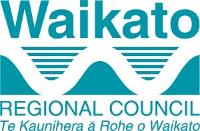
West Coast South
CCCV for the Waikawau, Southern Coastal, Awakino and Mōkau catchments

Challenges to freshwater in the FMU
Several current challenges to fresh water in these catchments may be relevant to your farm. These challenges include sediment, nutrients and bacterial pathogens in waterways, water quality, loss of freshwater habitats, unstable land and soils and other contaminants.
Water quality is influenced by different land uses, management practices, geology (soils and underlying rock), steepness and climate.
Interact with the 3D tour below to explore the ways the land interacts with water quality.
What does this mean for my FWFP?
The following sections present details about what these challenges can mean for you when preparing a FWFP. These sections also contain geographic information (soils, slope, landuse capability etc.) with relevant descriptions and explanations of how you can build on these information layers during your risk assessment.
Quick links to each section:
How can I use this information for my FWFP?
Use the Address Finder for CCCV tool to locate your site and understand the physical properties of your land. You can use the tool to download the results in various formats and you will be able to create a basic report.
How to use the tool?
The tool performs best on desktop computers. Use the guide below to learn about the mapping tools and functions. Please open the tool on a separate tab in your browser to enjoy full functionality and the best user experience.
Address Finder for CCCV
Tools, resources and references
Below are some links to some additional useful sources of information.
References
Ryan, E., & Jenkins, B. (2022). State of the environment monitoring river water quality. Waikato Regional Council Technical Report 2022/50. State of the environment monitoring river water quality (waikatoregion.govt.nz)
Waikato Regional Council. (2022). State of the Environment Report. Waikato State of the Environment 2022 .
Web page with supporting technical reports: State of the Environment 2022 | Waikato Regional Council
Norris, T., & Wyatt, J. (2023). Soil Stability in the Waikato Region. Waikato Regional Council Technical Report 2021/30. https://www.waikatoregion.govt.nz/services/publications/tr202130/
Addenbrooke, J., McKenzie, A., & Lawrence, L. (2016). West Coast Zone Plan. Waikato Regional Council Technical Report TR 2016/08. West Coast Zone Plan | Waikato Regional Council
Singleton, P. (2018). Priority west coast harbour catchments. WRC document number: 15198303.
Collier, K., Clements, B., David, B., Lake, M., & Leathwick, J. (2010). Significant natural areas of the Waikato region: streams and rivers. Waikato Regional Council Technical Report TR-2010-19.pdf (waikatoregion.govt.nz)
Norris, M., Jones, H., Kimberley, M., Borman, D. (2020). Riparian characteristics of pastoral waterways in the Waikato region, 2002–2017. Waikato Regional Council Technical Report 2020/12. Riparian characteristics of pastoral waterways in the Waikato region, 2002-2017 | Waikato Regional Council